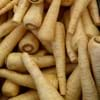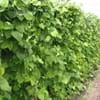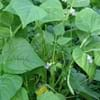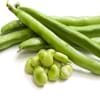Life Span
Biennial and Perennial
Perennial
Type
Vegetable
Flowering Plants, Fruits, Trees
Origin
Europe, Western Asia
Anatolia, Asia, Europe, Iran, Maghreb, Morocco, Norway, The Hiamalayas
Types
Not Available
Flowering Cherries, Sour Cherries, Sand Cherries, Sweet Cherries, Capulin Cherries
Number of Varieties
Not Available
Habitat
waste ground, wastelands
Forest edges, Wild, Woods
USDA Hardiness Zone
4-9
4-8
Sunset Zone
A1, A2, A3, H1, H2, 1a, 1b, 2a, 2b, 3a, 3b, 4, 5, 6, 7, 8, 9, 10, 11, 12, 13, 14, 15, 16, 17, 18, 19, 20, 21, 22, 23, 24
4, 5, 6, 7, 15, 16, 17
Habit
Rosette/Stemless
Upright/Erect
Flower Color
Yellow
White
Flower Color Modifier
Bicolor
Not Available
Fruit Color
Brown, Black
Red
Leaf Color in Spring
Green
Dark Green
Leaf Color in Summer
Green
Orange
Leaf Color in Fall
Green
Orange
Leaf Color in Winter
Not Available
Orange
Leaf Shape
Pinnate
Oblong
Plant Season
Summer
Spring, Summer
Sunlight
Full Sun
Full Sun, Partial shade
Growth Rate
Medium
Medium
Type of Soil
Loam
Loamy, Well drained
The pH of Soil
Neutral
Slightly Acidic
Soil Drainage
Well drained
Average
Bloom Time
Summer
Early Spring, Spring
Tolerances
Drought
Heat And Humidity, Not Available
Where to Plant?
Ground, Pot
Ground
How to Plant?
Seedlings
Grafting, Seedlings, Transplanting
Plant Maintenance
Medium
Medium
Watering Requirements
Average Water Needs, Do Not over Water, Keep the ground moist but not water-logged
Never Over-water, Over-watering can cause leaf problems or root diseases, Prefer drip-irrigation instead of Over-head watering, Water twice a day in the initial period
In Summer
Lots of watering
Lots of watering
In Spring
Moderate
Moderate
In Winter
Average Water
Average Water
Soil pH
Neutral
Slightly Acidic
Soil Type
Loam
Loamy, Well drained
Soil Drainage Capacity
Well drained
Average
Sun Exposure
Full Sun
Full Sun, Partial shade
Pruning
Remove damaged leaves, Remove dead branches, Remove dead leaves
Don't prune in the fall, Prune if you want to improve plant shape, Prune in late winter, Remove dead or diseased plant parts, Remove deadheads
Fertilizers
All-Purpose Liquid Fertilizer
All-Purpose Liquid Fertilizer
Pests and Diseases
Aphids, Armyworm, Cutworms, Downy mildew, Pitch canker, Red blotch
Aphids, Bacterial Canker, Black Knot, Brown Rot, Caterpillars
Plant Tolerance
Drought
Drought
Flower Petal Number
Not Available
Not Available
Fragrant Bark/Stem
Yes
No
Foliage Texture
Fine
Not Available
Foliage Sheen
Matte
Not Available
Attracts
Butterflies
Birds
Allergy
Stomach burn
Swelling in the face
Aesthetic Uses
Not Available
Showy Purposes
Beauty Benefits
Blood purifying, Good for skin
Not Available
Environmental Uses
Air purification
Air purification
Medicinal Uses
Aphrodisiac
Arthritis, Gout, Kidney problems, Rheumatoid arthritis, Swelling
Part of Plant Used
Root
Flowers, Fruits
Other Uses
Food for animals, Used as a nutritious food item
Wood is used for making furniture
Used As Indoor Plant
Yes
No
Used As Outdoor Plant
Yes
Yes
Garden Design
Edible, Herb, Vegetable
Not Available
Botanical Name
PASTINACA sativa
Prunus avium
Common Name
Parsnip
Cherry Tree
In Hindi
चुकंदर
चेरी का पेड़
In German
Pastinake
Kirschbaum
In French
Panais
Cerisier
In Spanish
Chirivía
Cerezo
In Greek
Είδος δαυκίου
κερασιά
In Portuguese
cherivia
árvore de cereja
In Polish
Pasternak
wiśniowe drzewo
Phylum
Magnoliophyta
Magnoliophyta
Class
Magnoliopsida
Magnoliopsida
Clade
Angiosperms, Asterids, Eudicots
Angiosperms, Eudicots, Rosids
Tribe
Not Available
Not Available
Subfamily
Not Available
Not Available
Number of Species
Not Available
Not Available
Season and Care of Parsnip and Cherry Tree
Season and care of Parsnip and Cherry Tree is important to know. While considering everything about Parsnip and Cherry Tree Care, growing season is an essential factor. Parsnip season is Summer and Cherry Tree season is Summer. The type of soil for Parsnip is Loam and for Cherry Tree is Loamy, Well drained while the PH of soil for Parsnip is Neutral and for Cherry Tree is Slightly Acidic.
Parsnip and Cherry Tree Physical Information
Parsnip and Cherry Tree physical information is very important for comparison. Parsnip height is 15.20 cm and width 7.60 cm whereas Cherry Tree height is 17.50 cm and width 17.50 cm. The color specification of Parsnip and Cherry Tree are as follows:
Parsnip flower color: Yellow
Parsnip leaf color: Green
Cherry Tree flower color: White
- Cherry Tree leaf color: Dark Green
Care of Parsnip and Cherry Tree
Care of Parsnip and Cherry Tree include pruning, fertilizers, watering etc. Parsnip pruning is done Remove damaged leaves, Remove dead branches and Remove dead leaves and Cherry Tree pruning is done Don't prune in the fall, Prune if you want to improve plant shape, Prune in late winter, Remove dead or diseased plant parts and Remove deadheads. In summer Parsnip needs Lots of watering and in winter, it needs Average Water. Whereas, in summer Cherry Tree needs Lots of watering and in winter, it needs Average Water.





